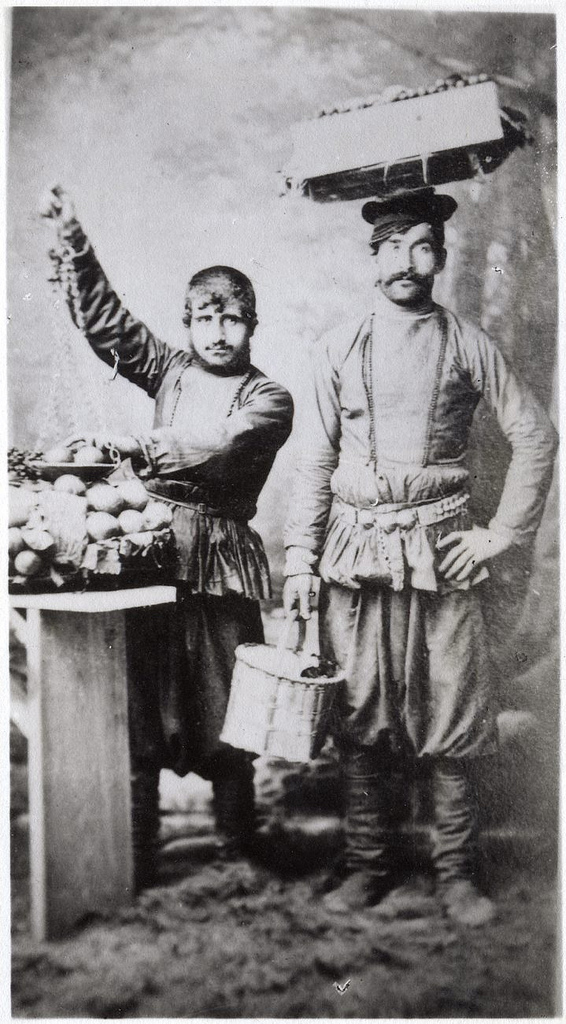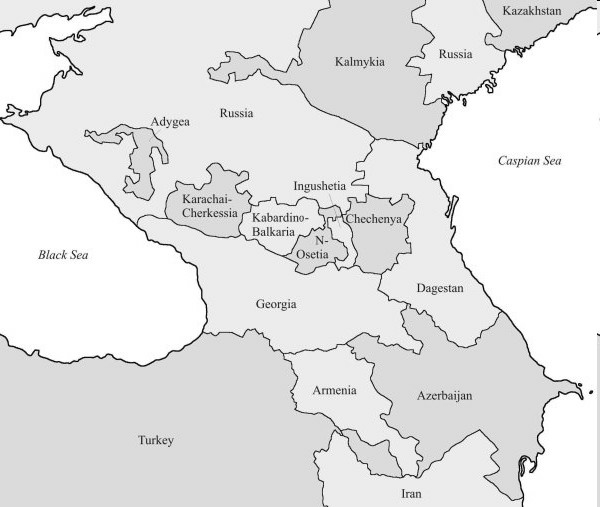When the Russian Empire colonized the Caucasus in the nineteenth century, it hoped to use its legal system as a way of “civilizing” and imposing control over diverse populations. An 1852 rape case, however, reveals that colonization was an uneven process. Local customs governing sexual violence competed with foreign rules even as regional authorities and imperial delegates jockeyed for power. Both Imperial Russian law and Azeri custom saw such violence as punishable, although in different ways. But neither could—or was willing to—protect the victim, especially when the crime involved same-sex contact.

In September of 1852, a sixteen-year-old youth named Aliaza reported to Russian authorities that another man, Mamed Gusein Sharif Ogly, had raped him. Aliaza explained that he arrived in the city of Baku to sell grapes then returned home. Gusein Sharif Ogly followed Aliaza and gained entrance to his home after convincing the young man that he wanted to buy grapes. Once inside, he raped Aliaza at gunpoint. Gusein Sharif Ogly was arrested and yet despite Aliaza’s claims, his mother’s confirmation of the rape, and the testimony of two additional witnesses, the court let Ogly out on bail and confined him to his village. By 1858, the Court decided not to pursue the case any further due to Ogly’s “good behavior.” This decision departed from Russian law to protect the weak and acceded to local customs that demanded blood revenge. The outcome of this case tells us much about different legal cultures and the colonial dynamic in the nineteenth century.
In nineteenth-century Caucasus, raping a man was considered a horrific crime that should result in the death of not only the aggressor but also the victim. Aliaza’s community believed that young men should defend their own manhood and their family honor by resorting to violence, even killing, when threatened with violence. Local custom dictated that justice, in the words of historian V.O. Bobrovnikov, “demand[ed] blood for blood.” Fathers told their sons that “they must carry-out blood vengeance without fail” and that by doing so they satisfied the “highest honor” for the family. This patriarchal system represented a way of maintaining order in society even as the maintenance of order was tied to one’s manhood. In other words, Aliaza’s community believed that he let himself get raped and that he suffered sexual violence because he did not fight back hard enough. Reconciliation of rapist and victim through marriage was not open to young male victims in the way it was for female victims. Because the local system of justice held Aliaza responsible for the sexual violence that he suffered, he and his mother turned to the Russian Imperial Shemakhiniskii War Guberni Court for justice.
The existence of competing narratives concerning rape, honor, and manhood at the imperial and local levels shaped Aliaza’s choice to appeal to the Russian Imperial Court. The Court offered defiled Caucasian males like Aliaza an alternative to customary law, which viewed them as “non-entities” because they had been raped. It approached accusations of rape with a desire to protect the victims of untoward violence. “Sodomy” (muzhelozhstvo) in the 1832 Russian law code was punishable through exile to Siberia for up to five years, and rape of a minor punishable by hard labor for up to twenty years. Men in Russian society gained dominance by faithfully protecting the weaker members of their world—women and children. Tsarist officials would have seen sixteen-year-old Aliaza as a young man just leaving childhood, likely deserving of protection. In the periphery, Tsarist officials saw themselves as civilizers of the indigenous populations with whom they interacted. Therefore, they sought to “protect” people like Aliaza from indigenous customs that might make them outsiders in Caucasian society. Aliaza and his mother, then, hoped that he might find protection from banishment and death in his own community by placing himself in the hands of Tsarist authorities.
Although Court documents suggest that Imperial authorities believed that Ogly committed the crime, the Shemakhinskii War Guberni Court chose not to pursue a case against him. Imperial officials only confined Ogly to his village. Two factors shaped this decision: the influence of local officials and broader fears of social unrest. The influence of the region’s governor—the uezd’s nachalnik—was paramount. The nachalnik informed Tsarist administrators that “up until this incident Ogly had acted in good conduct and he continued to do so presently as well.” When the nachalnik suggested that Mamed be confined to his village, the Tsar’s representatives wholeheartedly concurred, apparently eager to avoid dealing with the unsavory case. More importantly, fears of unrest subverted the Tsarist Russian Imperial Court’s practice of protecting the weak and offering alternatives to customary law. Tsarist administrators feared alienating the indigenous elites who helped rule the Caucasus. In short, Russian authorities negotiated with local customs rather than dominating them. In the end, they turned Aliaza’s case back in the hands of his own people.
Aliaza’s sad history exemplifies how political tensions played out on the ground between local culture and the Imperial governments. The political negotiations that took place remind us that the Russian Empire was not a homogenous space, but was instead internally diverse and subject to processes of accommodation, negotiation, and violence between its myriads of people and territories. Caught between Imperial ambitions and local customs, Aliaza likely did not find justice. Even if he was able to escape the punishment of death for bringing “dishonor” to his family, he was forever emasculated and marked as an outcast in his community.
 Dr. Kristin Collins works at Mercyhurst University teaching World, Russian, and Gender Studies. She received her doctorate in Russian and Eurasian History at The Ohio State University, and successfully defended her dissertation “Negotiating Imperial Spaces: Gender, Sexuality, and Violence in the Nineteenth-century Caucasus” in March, 2011. Her most recent project seeks to bring together her research, teaching, and art through the graphic novel.
Dr. Kristin Collins works at Mercyhurst University teaching World, Russian, and Gender Studies. She received her doctorate in Russian and Eurasian History at The Ohio State University, and successfully defended her dissertation “Negotiating Imperial Spaces: Gender, Sexuality, and Violence in the Nineteenth-century Caucasus” in March, 2011. Her most recent project seeks to bring together her research, teaching, and art through the graphic novel.

NOTCHES: (re)marks on the history of sexuality is licensed under a Creative Commons Attribution-NonCommercial-NoDerivatives 4.0 International License.
Based on a work at www.notchesblog.com.
For permission to publish any NOTCHES post in whole or in part please contact the editors at NotchesBlog@gmail.com






Really fascinating article – a great case to use to consider the situation.
However, I have issues with some of the phrasing for example “Reconciliation of rapist and victim through marriage was not open to young male victims in the way it was for female victims”. That seems quite a positive way of looking at things!
Also, what constituted the age of consent/majority? Would 16 have really been considered as a child?